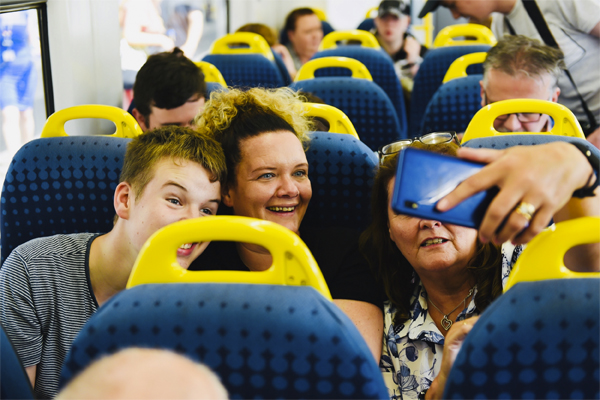This week’s diversity champion Daisy Chapman-Chamberlain has been in her role as Equality, Diversity and Inclusion (D&I) Lead at Community Rail Lancashire (CRL) for around three and a half years. Yet in that short time, her D&I initiatives have had a positive impact on young people travelling on rail networks in the North, particularly the most vulnerable. She’s also inspiring young girls into rail careers. Thanks to Chapman-Chamberlain and her growing D&I team, the impact of CRL’s inclusion initiatives are being felt not just across communities in the North of the England, but across the rail industry UK-wide. This is her D&I story.
Chapman-Chamberlain left her teaching role to join CRL in 2016 for a job with a much wider community remit: “My role at not-for-profit CRL, largely funded by Northern Rail, focuses on community connections ensuring that all passengers are included on our railway lines, regardless of their background/ability. If there’s a barrier to inclusion we work to tear them down. Since I started here, I’ve mainly dedicated my time to improving rail access, particularly for young and vulnerable travellers between the ages of 4 and 25.”

To date, her projects include providing adequate support for young people with special educational needs and disabilities on the UK’s railway in the North, safer travel for young LGBT+ passengers, as well as helping to increase the pipeline of women pursuing careers in rail.
TOP PROJECTS
“CRL had always worked with mainstream schools, but when I started I realised there was a gap in providing services for children with disabilities and special educational needs. So I created the Railway Confidence Programme, focusing on young people with disabilities, or those who needed additional support to access rail across North West England. This programme is essentially about making them feel confident and comfortable about using rail and gain vital social mobility skills,” says Chapman-Chamberlain. “This project also won an award from the National Autistic Society last year, awarding us first place in the Creative Community Project category.”
The Autism Friendly Railway Line project stemmed from that project. “We wanted to improve our services for families of children with special needs and disabilities, such as autism. Together, with Northern and the National Autistic Society, we created the UK’s first Autism Friendly Railway Line, which enables families with autistic children to have a stress-free family day out. As a result, many Northern staff have been trained to assist passengers with autism and other additional needs. We received 100% positive feedback from the attending families, who said that they would use the line in the future,” she adds.
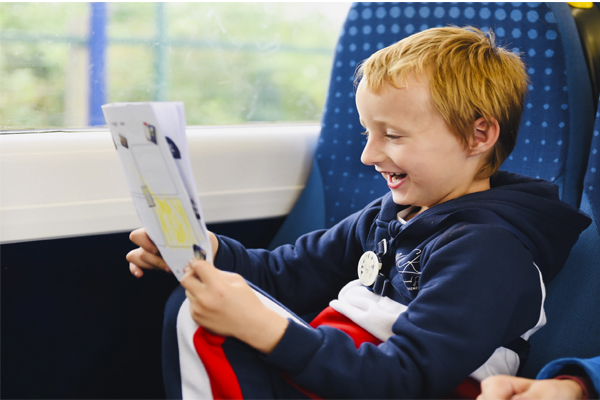
Photo credit: CRL
LGBTQ+ SUCCESS
CRL’s LGBTQ+ ‘Stand Clear of the Closet Doors’ project has also been hailed a huge success, confirms Chapman-Chamberlain: “The idea for this project came after reading about rising hate crime that’s experienced by LGBTQ+ people on public transport. So I got in touch with a Manchester-based youth LGBTQ+ group, The Proud Trust, and together we came up with the concept. Stand Clear of the Closet Doors is a network map of all the hidden LGBTQ+ historic places you can reach via rail, which is linked to a travel guide produced by the young LGBTQ+ community in the North, to encourage all passengers to visit these locations by rail.”
Visual artwork was also produced by the local youth alongside this project, which was displayed at Manchester Victoria railway station to help increase awareness and inclusion. “It made a huge impact visually, and received compliments from prominent people in the LGBTQ+ community from around the country,” she explains.
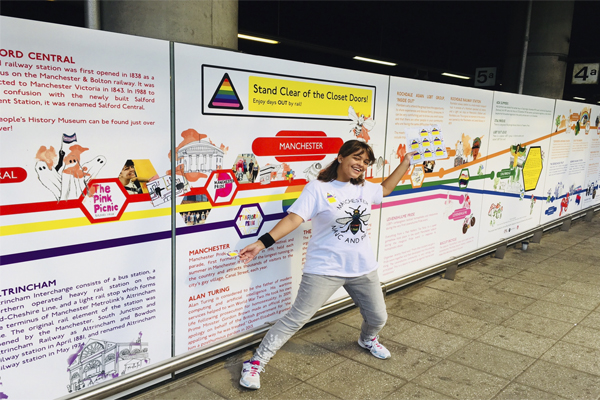
Photo credit: CRL
“The success of this project inspired our current Ticket to Pride project for 2020, which is another map based concept to build rail travel confidence for LGBTQ+ youth, which is very much linked to hate crime and how to report it safely. This project involves the British Transport Police and train operators in the North West, such as Northern and Network Rail.
“We worked with young LGBTQ+ youth across Chester, Liverpool and Manchester to address hate crime/incidents targeted at this community. We developed a programme to help instil confidence and empower them to report hate crime discreetly to keep them and their peers safe. This project also involved creating a toolkit that teachers can use to educate young people about this issue at schools along the Northern network and beyond,” adds Chapman-Chamberlain.
INSPIRING YOUNG WOMEN
Apart from making passengers feel included, CRL is helping to encourage more women to pursue careers in the rail industry through projects, such as Women Who Wander, she says: “This idea came from a 2016 Women in Rail report, which revealed a huge gender imbalance in rail that is heavily male-dominated (84% of men, compared to just 16% of women). So we wanted to do something to inspire young women into rail careers. In 2016, we invited young women to take a rail journey and write a creative piece for a competition, with the winners announced on International Women’s Day.”
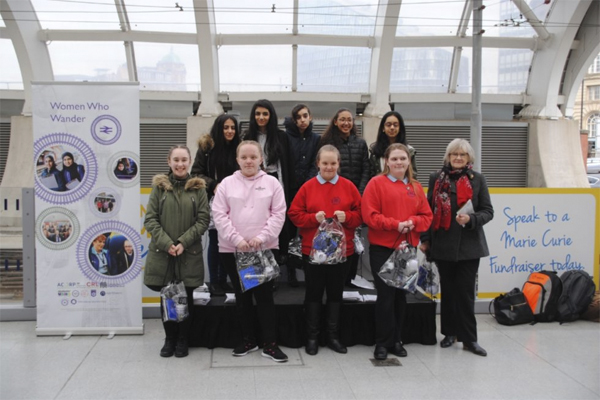
“Around 100 young women participated in the first year of the competition, and last year, more than 250 girls took part, so it’s been a huge success. This year, we are focusing the competition on ‘Women in STEM’. This project is a celebration of female voices in a male-dominated industry, and it’s encouraging to see the number of women taking part increase rapidly each year.
“For us, it’s really about finding creative ways to inspire young girls to join the rail industry and correct that gender imbalance. It’s vital that all young people from diverse groups and backgrounds feel included in rail, to shape current and future projects and policy, and to become future rail and community rail employees,” she points out.
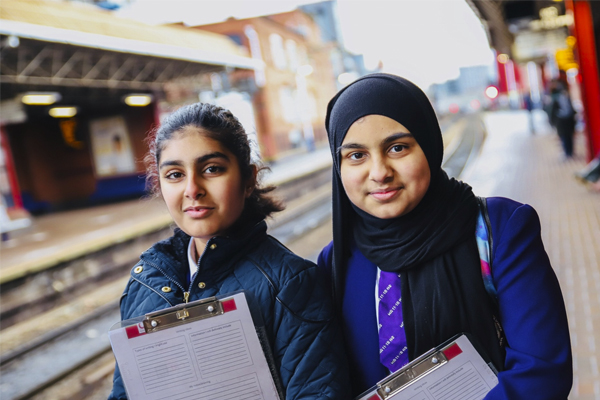
Other CRL creative projects include Slings on Trains events for parents with babies, developed by CRL officer Karen Bennett, ‘because travelling by train is a lot easier with a sling than with a pram’. A sling makes it easier to negotiate station steps, board the train and parents don’t have to find somewhere to keep the pram on the train.
“CRL also works with station adoption groups, mainly retired people who volunteer to look after our local community rail stations to make them welcoming. We make sure they have the tools to achieve that. We have also developed close relations with other minority communities in the area and worked on joint projects, for example with a young girl’s group from the local mosque,” says Chapman-Chamberlain.
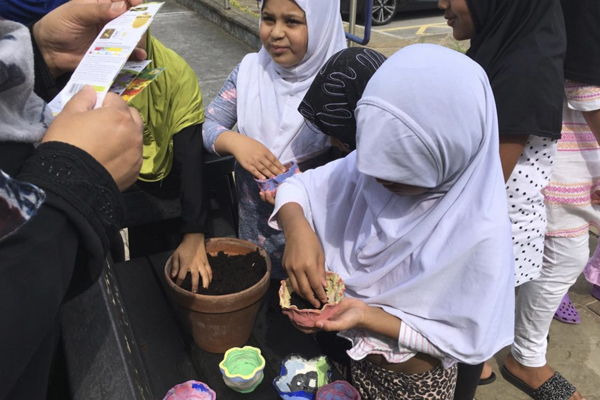
BEST PRACTICE TRAINING
Not only has CRL received fantastic feedback from passengers who are teachers, parents and youth across the North of the UK, it has since become a best practice centre, where other community rail centres and transport organisations come to learn from the success of its D&I projects.
CRL’s successful projects have had a ripple affect across the country, confirms Chapman-Chamberlain: “Word spread quickly about our inspiring projects, so now we run educational training for other organisations across the UK to share best practice on issues, such as how to develop partnerships with railway networks.”
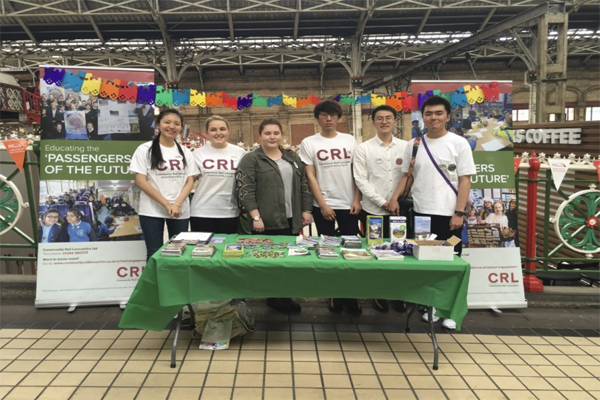
“We work with other railway operators outside the North of the UK to help them develop their programmes for young people with special educational needs/disabilities. We also work closely with the Department of Transport to develop community rail policy to promote wider railway work that is both inclusive and diverse, and provide a best practise model for other partnerships to follow,” she adds.
There’s never a dull moment during her day: “My team and I are involved in several projects going on at any one time to ensure various needs are being met.” When she started, she joined a small team of ‘hard-working and supportive men, along with one other woman’. She now manages a small team, of which 100% are women, to support the ‘diverse needs’ of the CRL region and beyond. So things are changing, albeit at a slow and gradual pace.
THE CHALLENGES
The success of all these projects didn’t come quickly or easily, according to Chapman-Chamberlain: “The biggest challenge for me and my team was, and still is, getting buy-in to the projects from what is a very traditional industry, which is still largely dominated by white men. So in the earlier days when I first joined, some CRL projects struggled to get the initial interest and input.
“No one was ever unpleasant, but there clearly was an element of not understanding simply because they weren’t from a marginalised community, so they couldn’t always see the point of what we were pushing for. Even today, to some extent, it can really be difficult to get that company-wide buy-in for our projects because of the sheer size of the UK’s rail network. But for our projects to be successful, we need that buy-in and cohesion across the industry, so it’s an ongoing education and relationship-building process.”
To get that all-important buy-in, creating a partnership approach is a must, she insists: “It’s about building relationships with the interested few at first and giving them ownership of the project. These people tend to be those that do ‘get the point’ of our projects because they usually have a family member with special needs or are from a marginalised community. Once you get these people involved, you ultimately get the wider buy-in of their colleagues over time as a result of them talking about the work. It’s important to note, it is a long process. It’s never going to be quick or easy.”
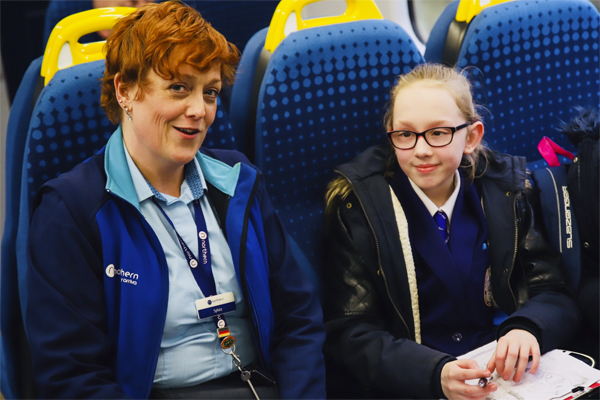
“Thanks to building these relationships, we now work closely with train operators such as Northern, Merseyrail, etc, and they are as just involved as us in the projects. For example, on projects like Women Who Wander, their employees come out with us to talk about their roles, carry out mock interviews, etc. So it’s not just us delivering an agenda, but ensuring that all stakeholders participate, so they too can ultimately see and understand the huge benefits of our programmes,” she explains.
THE BENEFITS
“We know that community rail lines are growing faster in terms of passenger numbers than non-community rail lines, so rail operators are aligning more with community rail groups like CRL,” confirms Chapman-Chamberlain. “The Value of Community Rail report found that lines with community rail partnerships performed well in terms of passenger numbers, showing a 42% increase from 2008/9 to 2017/18, compared to an overall increase of 35%. This reinforces the idea that engaging communities in their local railways helps people get maximum use from them, as well as attracting passengers using sustainable means.”
Rail partnerships at stations with community rail groups also have “lower levels of antisocial behaviour and vandalism, so for operators such as Northern, who support CRL, it’s an added bonus. Also because we are more in touch with the communities that rail operators serve, we feed useful customer information back to our partners to help them shape their services to better serve their passengers – so it’s a very symbiotic relationship”, she adds.
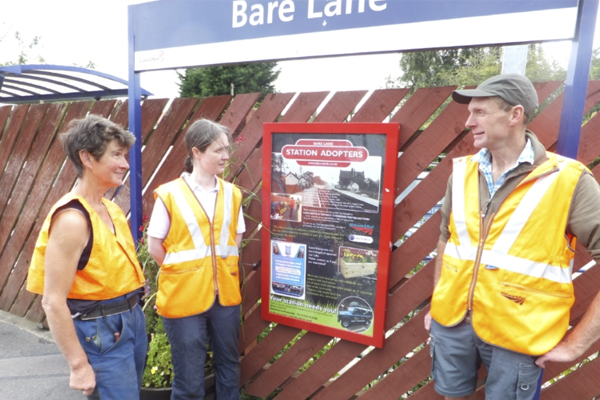
TIPS & ADVICE
Her advice to other D&I professionals involved in outreach community work is to ensure that you include all stakeholders as much as possible and to be extremely flexible with projects: “For example, we know that LGBTQ+ youth aren’t impressed by rainbow lip service, where an organisation just paints a rainbow on the side of a building/wall to show that they are inclusive. They want projects to have real depth. By involving them in our LGBTQ+ projects at every stage and allowing them to show us what they wanted, the campaigns reflected their views and needs, which is why they have been so successful.”
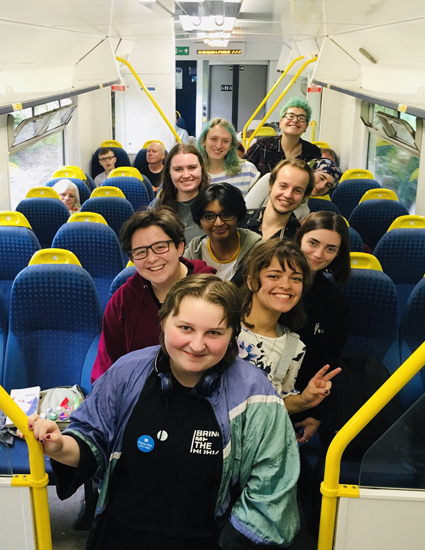
“It’s also vital to provide all employees language training to be more inclusive, and actually give them the time to develop this knowledge as opposed to just expecting people to automatically know what words they can/can’t use or might offend. For example, we found that many people, particularly older generations in traditional industries, are confused about things like what LGBTQ+ vocabulary is appropriate. Not having the appropriate language skills can also be a barrier for them as some people will avoid certain projects out of fear of making unintentional discriminatory mistakes. So it’s vital we give staff the appropriate language training to fully operate in their role,” she points out.
“We have provided workshops on appropriate language use around the LGBTQ+ community, alongside communication training to understand the growing range of needs that must be met, particularly for passengers with less visible disabilities/needs, such as autism (together with the National Autistic Society), to help staff make better decisions,” says Chapman-Chamberlain. “But if you don’t give employees the skills, for example, to help them recognise that certain behaviours (such as no eye contact, or repetitive movements), could indicate a less-visible disability, they won’t be able to communicate effectively and make appropriate adjustments.”
Finally, companies should not overlook unconscious bias training either. “It’s vital for everyone to acknowledge the privileges they have whether it’s as a woman/man, being white, non-disabled, etc, so that all employees can take steps to be more inclusive. After all, the more inclusive an organisation is, the more productive it is, resulting in sustained growth and success. It really is a no-brainer,” she concludes.














